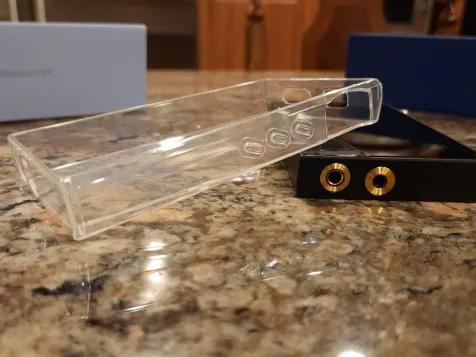MIPRO MI-58 Stereo Digital Wireless In-Ear Monitor System
The MI-58R beltpack receiver and the MI-58T or MI-58TD transmitter make up the MIPRO MI-58, a stereo digital in-ear wireless monitor system. Why are there two distinct transmitters? Audinate Dante audio networks are interfaced with via the “TD” version.
Three frequency groups (A, B1, and B2) are available for the MI-58, which operates in the ISM 5.8 GHz range. Group A has 12 channels, while groups B1 and B2 have 24 channels. The digital system has an extremely low reported latency of 2.2 milliseconds and employs a 24-bit/48 kHz sampling rate.

MIPRO MI-58 Stereo Digital Wireless In-Ear Monitor System introduction
With the optional FB-71 or FB-72 rack mount kits, the transmitter (base) unit, which is half-rack in size, can be rack-mounted alone or with two units adjacent to one another. FBC-72 cables, which move the antenna from the rear of the device to the front for rack mounting, are also optionally included.
The transmitter has a 25 mW output power, and the system’s stated frequency response range is an astonishing 20 Hz to 23 kHz. An OLED graphical screen, a push-to-synch button, a stereo level button, a push-and-turn rotary selector knob, and volume meters are all included on the front panel. The front panel controls are completed by a power switch and two headphone ports (3.5-mm TRS and 1/4-inch TRS) with volume control.
RJ-11 connectors for the ACT-BUS networking interface, 1/4-inch TRS loop outputs, an antenna connector, XLR/TRS combination inputs, a power connection for the 12-volt “wall wart” power source, and an RJ-45 connection for Dante output (again, for the TD version) are all available on the back of the transmitter. The transmitter has a strong metal body and is well constructed.

Housed in a lightweight glass-fiber reinforced plastic container, the beltpack receiver must be among the smallest devices in the industry. It has a backlit LED display, a 3.5 mm earphone jack, up and down push buttons, and a combined on/off volume control.
The lithium-ion rechargeable battery (ICR18500) and a mode push button are accessible by opening the battery compartment. The beltpack claims to have a left/right stereo separation of >100 dB and an output of 100 mW at 16 ohms. Included are MIPRO’s E-8S standard earbuds. The E-8P professional earphones, MP80 dual charger, and drop-in MP-8 single charger are optional accessories. It is anticipated that an AT-58 directional antenna will be made available soon.
Getting Acquainted
As soon as I opened the box, I saw that the system came with a high-quality carry bag lined with plastic foam, which is ideal for performers who will not be rack mounting the transmitter. The aforementioned 1/4-inch and 3.5-mm connectors on the transmitter caught my attention as well. Nice! On gigs, I frequently misplace my 3.5 mm to 1/4-inch headphone adaptor, but this clever design solution fixes that issue.
The beltpack receiver’s small size and low weight were the next noteworthy feature. Additionally, it has a wire spring clasp, which makes fastening it to belts or clothes simple.
My test bench in the shop was the first place I went for inspection and a quick test run, as I do with all gear evaluations. Using the combo jacks for the input made connecting the transmitter simple. MIPRO also sent along a pair of its E-8S regular earphones, albeit I already have a few. A long connection connects them, which is another great touch. They came in beige and can be fitted with any of the three earbud covers to achieve the desired fit.
The business also gave me an MP-8 charger so I could recharge the battery in the receiver. Before using the earphones with the system, I listened to them on my phone while I waited for the battery to be fully charged. They are really comfy to wear and have a nice sound.

I connected the rig to my bench mixer after it had been charging for around 30 minutes. Using the meters and gain knobs on the front panel made setting the transmitter’s levels simple. After selecting a channel and plugging the earbuds into the beltpack, I got to work. The system’s sound quality is remarkable.
I next chose to stroll around my warehouse and place metal pallet racking and shelving between the transmitter and receiver to verify the rig’s operating range. I encountered no issues or dropouts. I walked outside the store determined to make the unit “hiccup,” and despite a metal door and a distance of roughly 100 feet between the transmitter and receiver, there were no obvious issues.
The ability to put the beltpack to a “MIXED” mode and receive both the left and right signals in each ear when you feed the transmitter a stereo signal is one aspect of the system that I truly enjoy. I left for a few gigs, satisfied that everything was operating as it should and that nothing had been harmed during transit.
Out In The World
I was asked to cover for a youth band rehearsal at my friend’s church because of a family emergency. I configured the system as my personal mobile monitor because the band was accustomed to floor monitors and none of the performers had ever utilized IEMs. I was able to hear the main mix when I connected the digital console’s headphone jack to the transmitter.
More significantly, though, I was able to press “solo” when I wanted to listen to a certain instrument because that’s what I heard in my ear when I used the mixer app on my iPad. I say “ear” because I only put in one earbud when I was out and about mixing.
The solution worked perfectly, and the configuration let me solo a channel or output while mixing remotely from the digital console while moving about with my iPad. I also tested my headphones with the receiver while I was out and about, so users can choose to wear headphones rather than earbuds if they are in a noisy setting or are listening to a very loud band. There were dropouts or other issues, but the beltpack had more than enough volume to power up the headphones.

At sound check, I asked one of the praise band vocalists, who had her own IEM system, if we could use the MI-58 in place of her IEM system for the Mother’s Day event that was scheduled at the same church. Using her own specially made earbuds, she complied with pleasure. She came over to me after the sound check and remarked on how lightweight and compact the beltpack was in comparison to her own. Following the performance, she praised the system’s audio quality and once more praised the pack’s minuscule size and weight.
I was already a huge fan of MIPRO prior to the MI-58 review process, but after learning about the pricing and doing some research, I’m even more delighted. With a price point that is lower than many other similar systems, the device has a ton of capabilities, sounds fantastic, and functions flawlessly.
Additionally, Dante networking capabilities are becoming more and more valuable, and I see a lot of productions snatching up the opportunity to network their IEMs since it’s now reasonably priced. Lastly, there are numerous channels available, and the signal remained incredibly stable during the testing procedure. Because of this, I believe MIPRO has a true winner with the MI-58 system.
The business also gave me an MP-8 charger so I could recharge the battery in the receiver. Before using the earphones with the system, I listened to them on my phone while I waited for the battery to be fully charged. They are really comfy to wear and have a nice sound.






